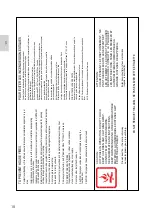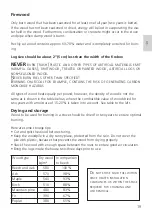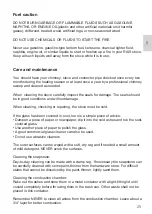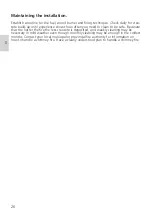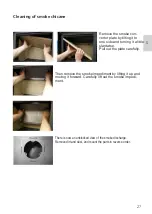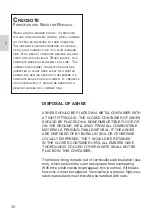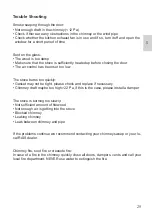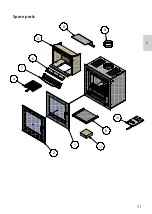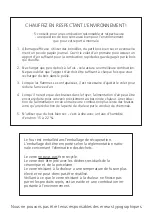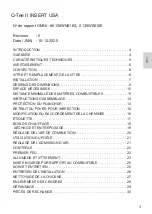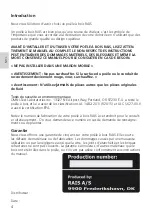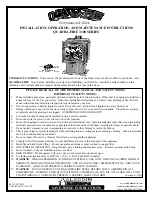
19
US
Firewood
Only burn wood that has been seasoned for at least one full year (two years is better).
If the wood has not been seasoned or dried, energy will be lost in evaporating the wa-
ter held in the wood. Furthermore, condensation or creosote might occur in the stove
and pipe when damp wood is burnt.
Freshly cut wood contains approx. 60-70% water and is completely unsuited for burn-
ing.
Log size should be about 2” (5 cm) less than the width of the firebox
NEVER
burn
trash
(
plastIc
and
other
types
of
artIfIcIal
materIals
emIt
harmful
gases
),
drIftwood
,
treated
or
paInted
wood
,
artIfIcIal
logs
or
non
-
seasoned
wood
.
n
ever
burn
fuels
other
than
specIfIed
!
b
urnIng
charcoal
for
example
,
contaIns
the
rIsk
of
generatIng
carbon
monoxIde
hazards
All types of wood heat equally per pound; however, the density of wood is not the
same as is shown in the table below, where the combustible value of wood dried for
two years with a moisture of 15-20% is taken into account. See table to the left.
Drying and storage
Wood to be used for burning in a stove should be dried for two years to ensure optimal
burning.
Here are some storage tips:
• Cut and split the wood before storing.
• Keep the woodpile in a dry sunny place, protected from the rain. Do not cover the
pile with plastic, because that prevents the wood from drying properly.
• Stack the wood with enough space between the rows to ensure good air circulation.
• Bring the logs inside the house two-three days prior to use.
Wood type
Dry wood
kg/m³
In comparison
to beech
Beech and oak
580
100 %
Ash
570
98 %
Maple
540
93 %
Birch
510
88 %
Mountain pine
480
83 %
Fir
390
67 %
Poplar
380
65 %
d
o
not
store
solId
fuel
wIthIn
space
heater
InstallatIon
clearances
or
wIthIn
the
space
requIred
for
chargIng
and
ash
removal
.














